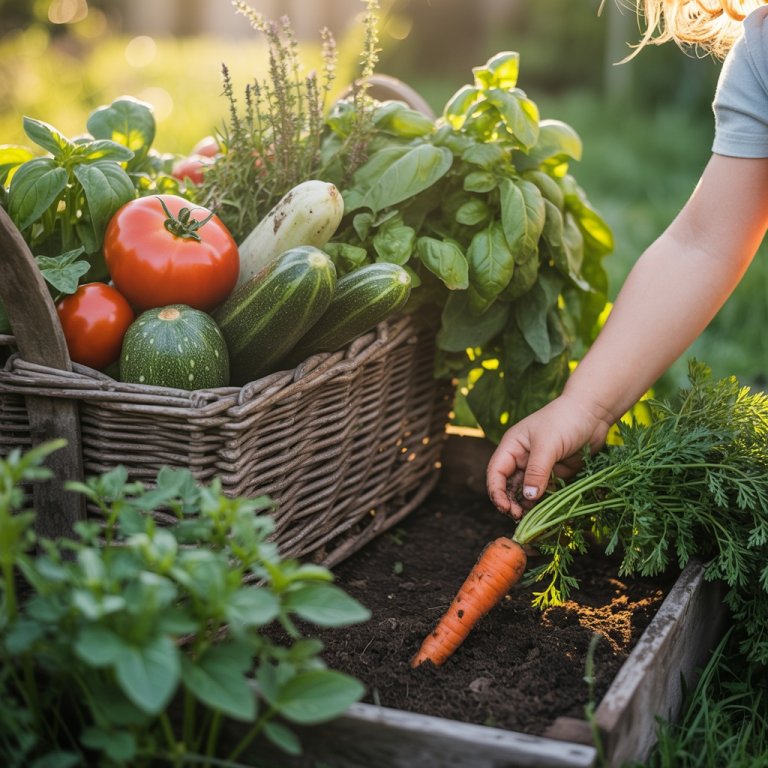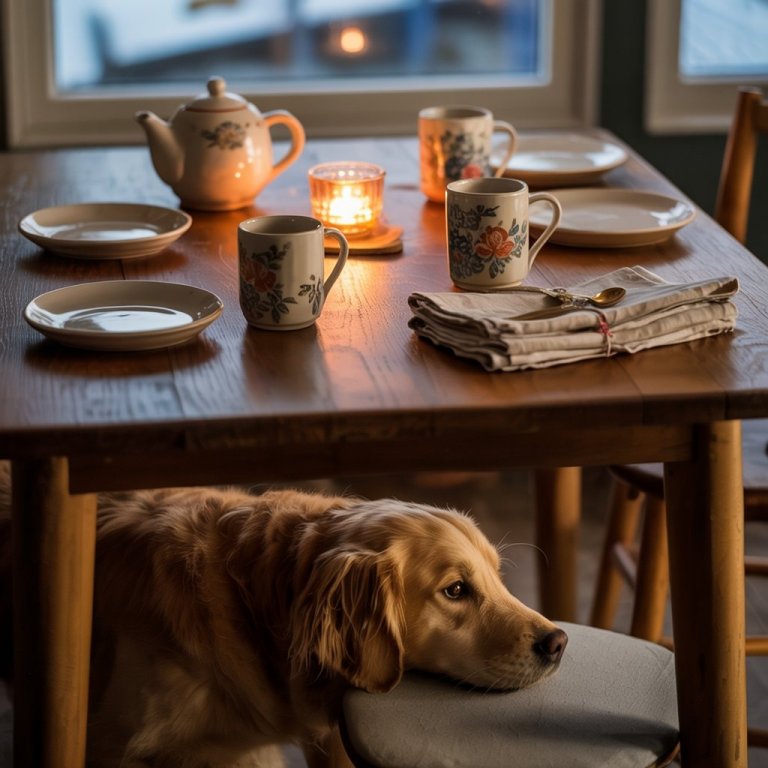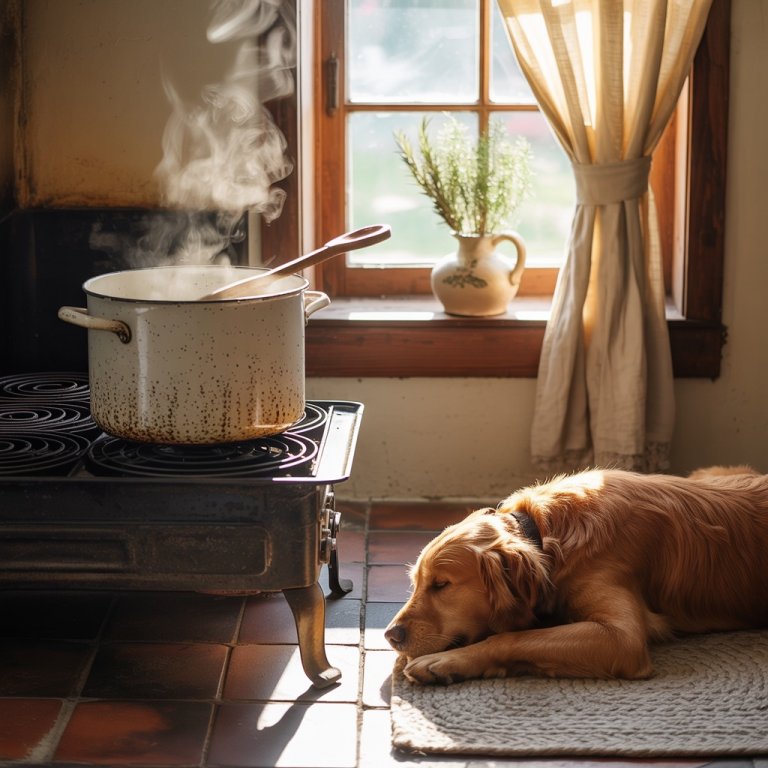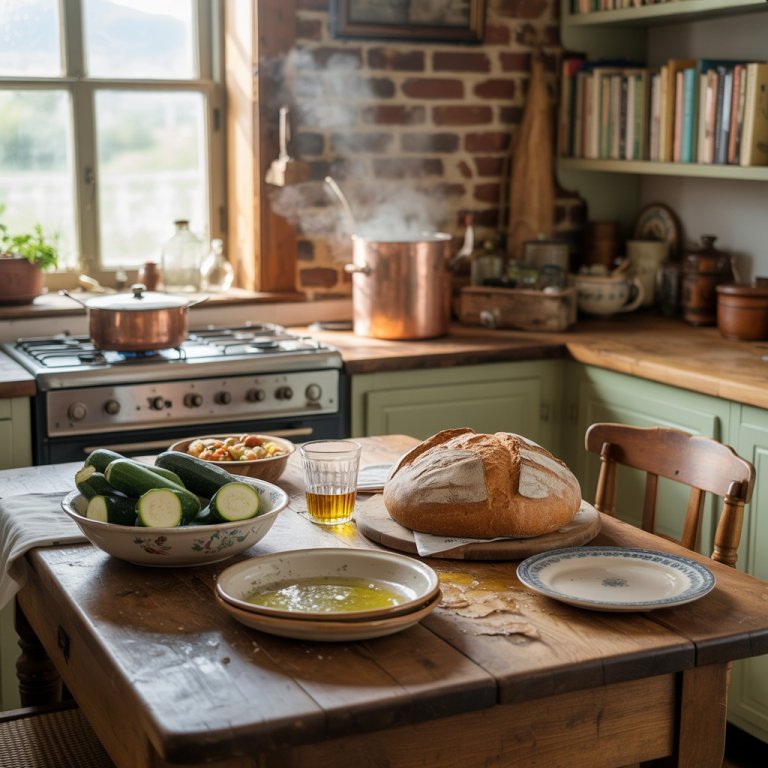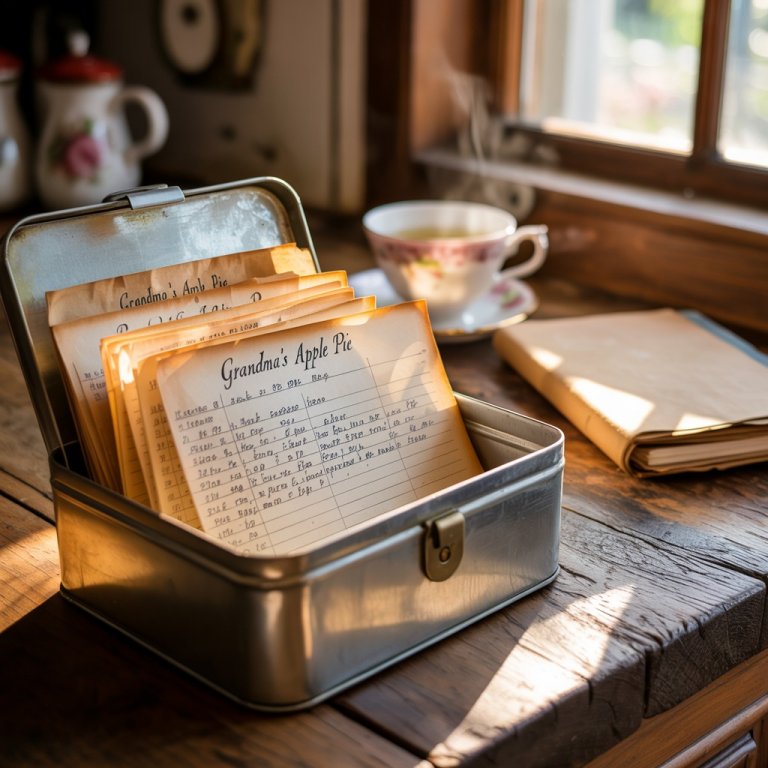How I Meal Plan Without Losing My Mind
When Meal Planning Used to Feel Like a Chore
If I’m honest, I used to dread meal planning. It always felt like one more thing I should be better at. I’d open the fridge, see a tangle of mismatched ingredients, and feel a wave of guilt wash over me—especially if something had gone a bit soft in the back of the drawer (looking at you, spring onions).
My Sundays would start with good intentions: maybe a blank planner, a few torn-out magazine recipes, or even a fancy pen. But by Monday evening, life would barrel in like it always does—school runs, spilled juice, a dog who insists on barking right as I’m trying to read a recipe—and suddenly, the whole thing felt impossible.
Then something shifted. Not all at once, but slowly, like how you start boiling water on the hob without realizing it’s getting hot. I began to notice that my best weeks weren’t the ones where I planned every meal down to the last grain of rice. They were the weeks when I gave myself a bit of grace. A bit of space. When the plan didn’t feel like a rigid contract but a quiet nudge in the right direction.
That’s when I realized: meal planning isn’t about perfection. It’s about reducing the noise.
A Life That Needs Gentle Structure
Living out here in the countryside has taught me to work with rhythms. Not strict routines, but soft patterns that keep life flowing.
Between the school drop-offs, my food blog deadlines, and trying to keep Maple from digging up the beetroot patch, I’ve found that I need a system. But I also need that system to bend with me. I can’t follow colour-coded spreadsheets or batch cook 21 meals at once. I need something that fits into the life I have, not the one I wish I had on Pinterest.
So over the years, I’ve crafted my own little rhythm. It’s not glamorous. It involves scribbled notes, messy handwriting, and a lot of flexibility. But it works. Most weeks, it keeps us well-fed and less stressed, and even gives me space to enjoy the process.
And that, I think, is the real win.
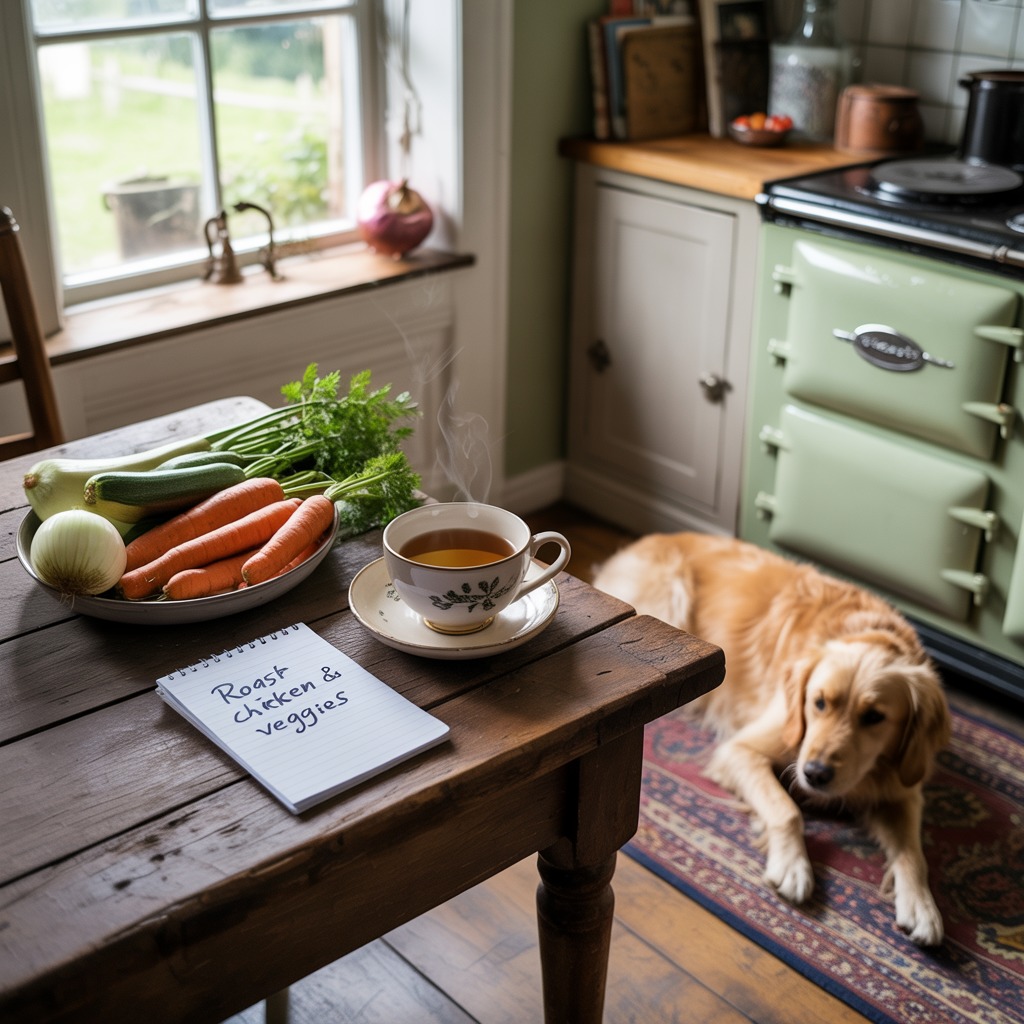
What My Meal Planning Actually Looks Like
Every Sunday afternoon, once the kids have had their screen time and the house feels a bit calmer, I sit at the kitchen table with a mug of tea. I don’t plan a week’s worth of perfect meals. I just do this:
I look at what we already have.
That’s my first rule. I check the fridge, freezer, and pantry—what needs using? What’s nearly gone off? This one habit has helped us waste far less food and save a surprising amount of money.
Then, I plan just four dinners.
Not seven. Not a month ahead. Just four. That’s my sweet spot.
Four meals give us enough structure without feeling overwhelmed. It leaves space for leftovers, for spontaneous fish and chip nights, for neighborly invitations, and for days when cooking just feels like too much.
And here’s how I fill in those four:
1. A pantry-friendly meal
Usually something like lentil soup, egg fried rice, or pasta with garlic and greens. Things I can make if the shops have slipped my mind.
2. A “kids-help” dinner
My daughter loves making homemade pizzas, and my son enjoys “decorating” jacket potatoes with cheese and sweetcorn. These meals are slower, a bit messier, but joyful.
3. A freezer rescue
Once a week, I try to use something from the freezer. Sometimes it’s a leftover stew, sometimes just frozen peas and fish fingers. No shame, just supper.
4. A weekend-ish meal
Something I’ll enjoy making with music on in the background—maybe a roast veg tart or a slow-cooked curry. It’s not fancy, just made with love.
That’s it. I write these four on a scrap of paper or jot them in my notes app. Nothing fancy. But it anchors the week beautifully.
Grocery Shopping, The Lazy Way
I used to try writing long, ambitious lists. But these days, I break it down into just a few quick notes:
- Fresh produce we’ll definitely use (things that can fit into multiple meals, like carrots or spinach)
- One protein source (chicken, beans, or eggs)
- One fun ingredient (cheese for snacking, a new herb, or something seasonal like apricots)
- A top-up of essentials (milk, oats, butter)
I’ve also started keeping a list of “always good to have” ingredients taped inside the pantry door—things like tinned tomatoes, pasta, and chickpeas. So if I’m ever stuck, I can pull a meal together without panic.
And if the kids are with me while shopping? We play “choose one” games: one fruit, one veggie, one treat. It keeps them engaged, and it’s a lovely way to teach them how to shop with intention.
Making It All Feel Lighter
Meal planning has become less about control and more about ease. I’ve given myself permission to change the plan mid-week. I no longer feel guilty about repeating the same favourite meals. And I’ve learned that toast and soup absolutely count as dinner.
Some weeks, I don’t even write anything down. I just mentally walk through our schedule and think, “What will we actually have energy for?”
Because that’s the key, really—matching meals to our life, not forcing life to fit the meals.
And it helps to have a few “fallback dinners”—things I can make with my eyes closed, even if it’s been a hard day. For us, that’s scrambled eggs on toast, roasted veg with hummus, or pasta with whatever sauce I can cobble together.
If all else fails, there’s always porridge and apple slices. The kids think it’s a treat. So do I.
Final Thoughts
Meal planning doesn’t have to be another task that weighs you down. It can be a quiet anchor—a gentle way of taking care of yourself and your people.
It’s not about being perfect. It’s about being prepared enough to breathe easier during the week. About having just enough of a plan that you don’t spend every afternoon asking yourself, “What’s for dinner?”
So if you’ve struggled with it—if meal planning has felt like another mountain to climb—just know you’re not alone. And you don’t have to climb it all at once.
Start small. Plan less. Make room for leftovers, for lazy evenings, and for joy. And if you ever want to swap low-effort dinner ideas, I’m just here in my cozy kitchen, happily scribbling next week’s four meals.
What’s one meal you can always count on to save the day? I’d love to hear yours.

